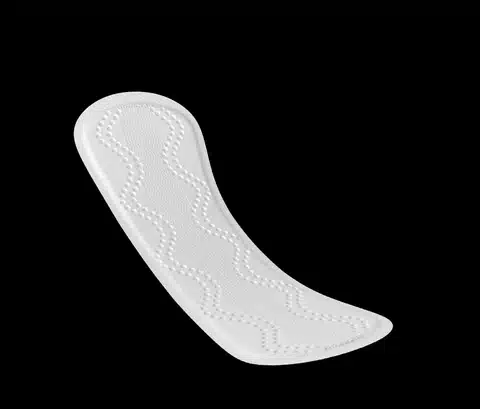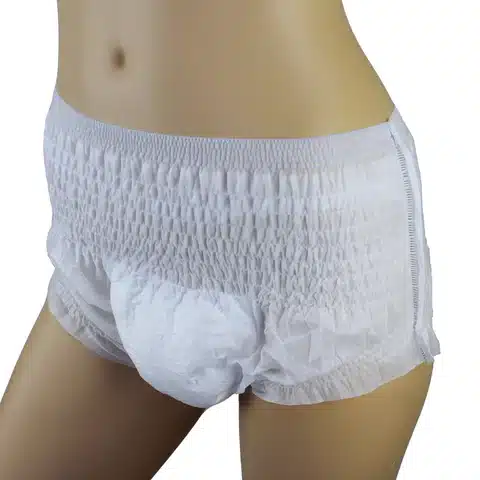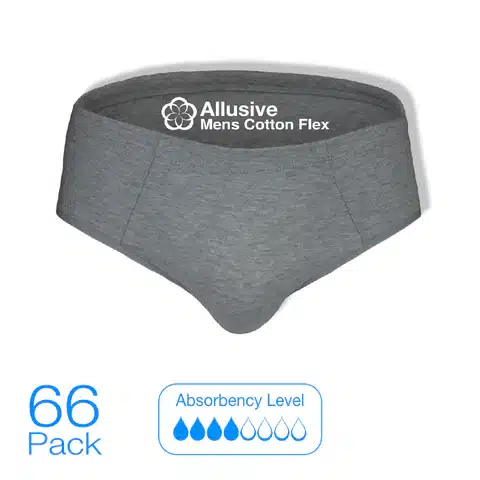Recently studies have shown that up to 20% of women report having quit their physical activities due to incontinence. Leaking due to exercise is an unfortunate symptom of incontinence, especially when pressure is placed on the bladder. As well as exercise, activities like heavy lifting and coughing can also cause symptoms. However, incontinence shouldn’t limit your ability to participate in activities and exercise. In fact, keeping healthy and exercising actually improve the symptoms of incontinence. So join us today as we discuss the best ways to get you exercising again, despite incontinence.

Don’t Wear Panty Liners
Panty liners are not going to properly address or contain your incontinence. You need to choose an appropriate incontinence pad to suit your level of leakage. Further, if your incontinence is a new development, it is important to discuss the issue with your doctor to find the cause, and see if anything can be done to improve the condition.
Choose Your Exercise Incontinence Pads
Many people find choosing the right incontinence product daunting. This can be due to embarrassment, uncertainty, and the concerns about what might happen if you wear an unsuitable, unsubtle or bulky product. However, researching for the right style and features for your activities can help you turn your exercise into a confident and relaxed activity!

Avoid Bulky Incontinence Pads
Not all incontinence products have to be big and bulky! There are many versatile products on sites like Holistic Incontinence, offering pads that are both discreet and comfortable. When exercising, try to choose a pad in a small size but at the right absorption level for you.
Look for Close Fit Design
The best way to feel comfortable is to feel like your incontinence product is discreet. Modern incontinence products are designed to fit the male or female shape, depending on what you buy. This means they provide maximum security, while allowing your skin to breathe as well as preventing leakage.

Choose a Breathable Options
When exercising, you want to wear the most breathable material possible. The same is true when you choose incontinence pads for exercising. Not only is it more comfortable but it can help prevent a range of skin health problems associated with dermatitis and other infections.
Think About Absorbency
If you wear incontinence pads on a daily basis, generally those you need a more absorbent version for exercising. For example. If you use a normal absorbency pad during the day, you may need an extra or extra plus for exercising.

Exercising Properly
Stretching and weakening the pelvic floor increases the risk of bladder and bowel control issues. Further, high impact aerobic and resistance exercises are more likely to place a strong downward strain on the pelvic floor which, over time, stretches and weakens the pelvic floor muscles.
Unless you already have a strong pelvic floor, it is important to avoid high-impact exercises like skipping, running or jumping, or sports that require quick changes of direction. These cause a greater downward force on the bladder, risking leakage and further damage to the pelvic floor. Try swimming, cycling, walking, water aerobic or other low-impact exercises instead.
Further excessive weights or intense abdominal exercises like crunches and lunges can exert too much downward force on the pelvic floor, also causing damage over time. Always ensure you have the appropriate posture, stance and contraction of the pelvic muscles when lifting. Avoid lifting or any exercises that cause strain or cause you to hold your breath. Finally, when doing squats or standing exercises, keep your legs no more than shoulder width apart and avoid deep lunges.
Relax Your Pelvic Floor
No muscle in your body is meant to be held tightly all the time. This includes out pelvic floor muscles. While it is good to exercise them and squeeze them, but it is also important to let them relax and soften. Too much tightening of the pelvic floor without relaxing can cause excessive tension and pain, causing further issues.

Avoid Core Trainers
Modern core trainers are simply resurrected, modernised corsets. These days they are promoted for use during exercise to speed up waist-contouring and slimming. Many manufacturers claim that, by compressing the abdomen, a core trainer will “work around the core muscles, pushing them inward to achieve a slimmer waist while stimulating thermal activity, resulting in ramped up perspiration”. However, compressing the abdomen in this way forces the diaphragm high into the chest cavity, and the pelvic floor in the pelvic. This constant pressure puts additional strain on the pelvic floor increase the likelihood of incontinence or the increase in incontinence symptoms.
Explore the Holistic Incontinence range today to find the best incontinence products for your needs!
